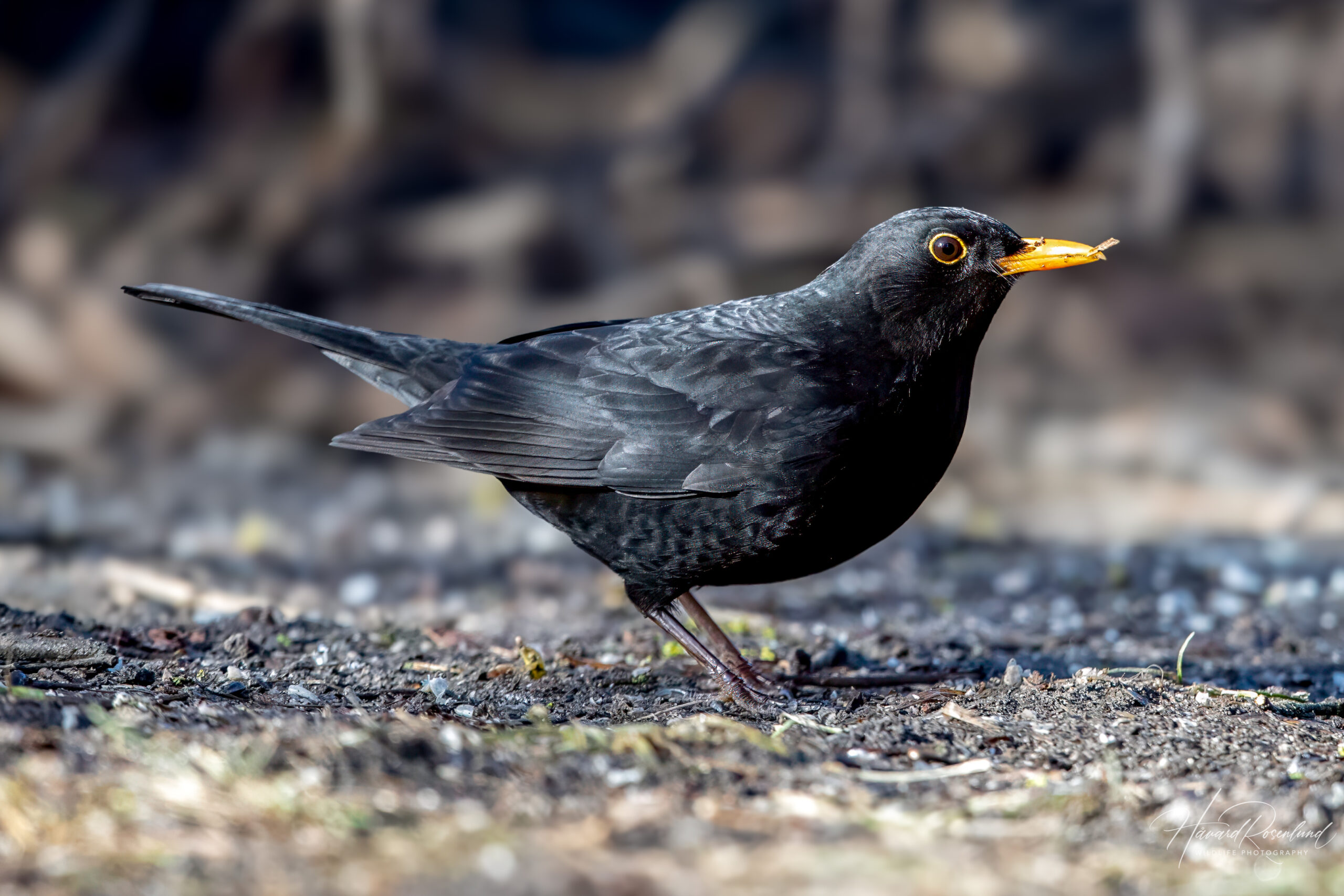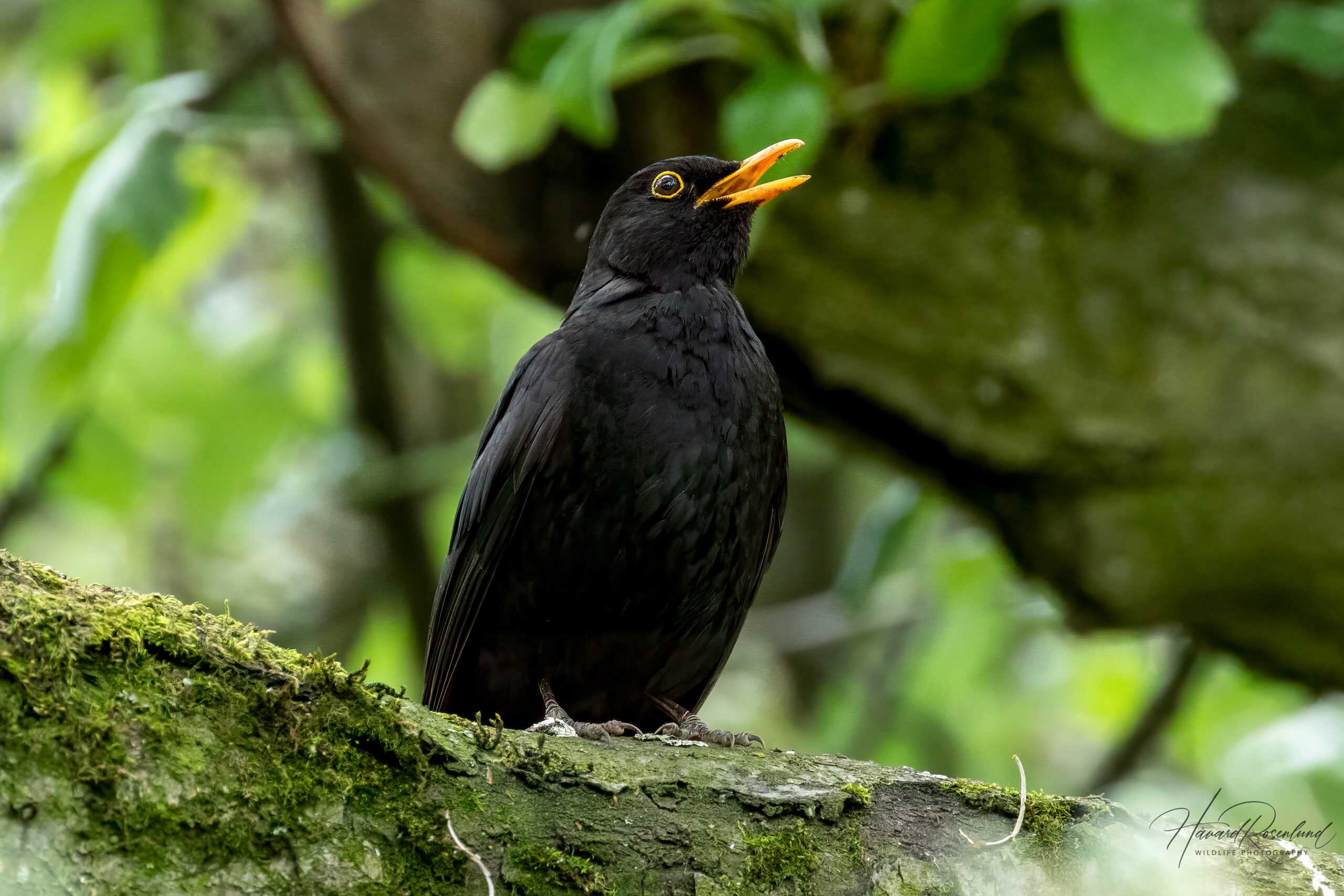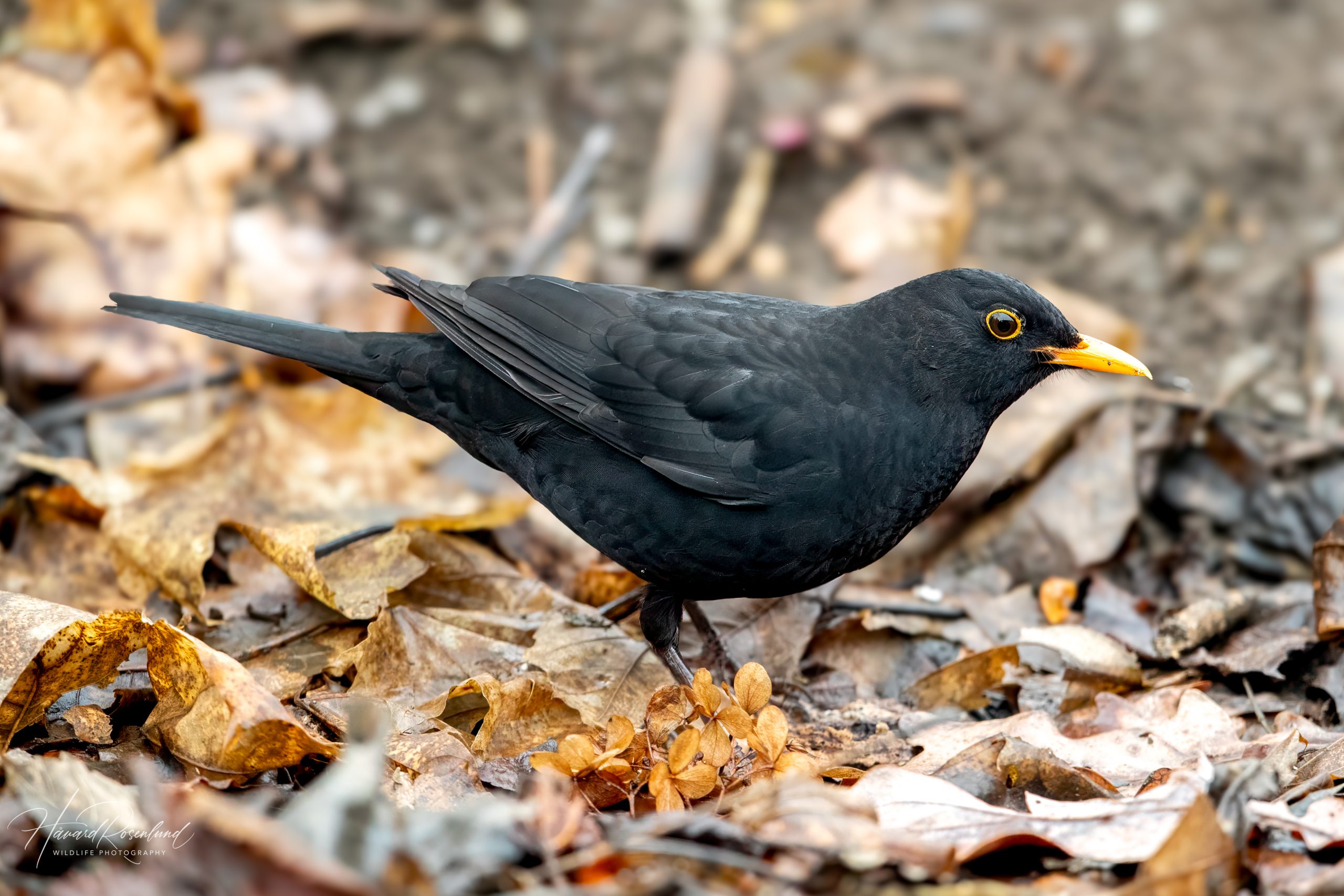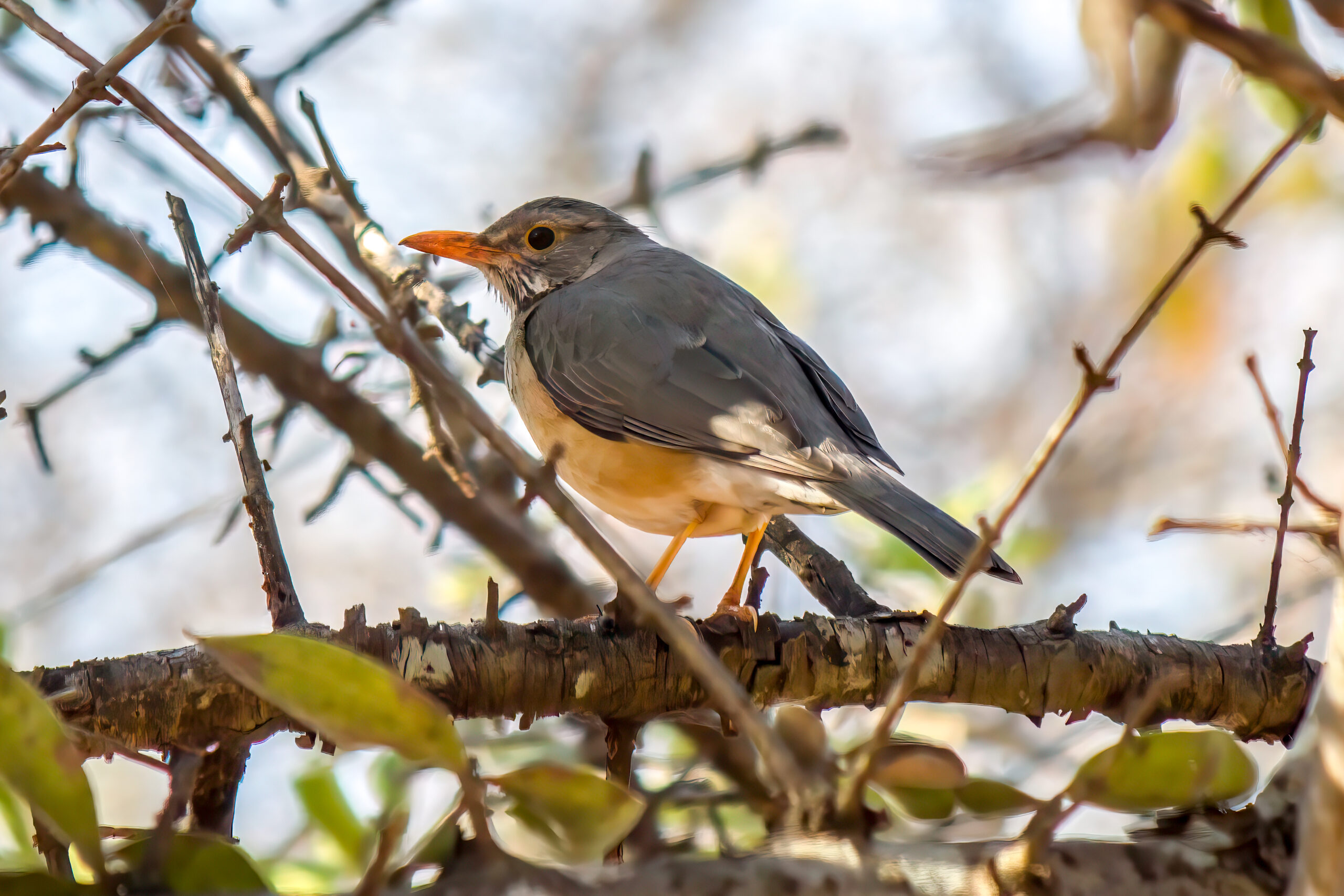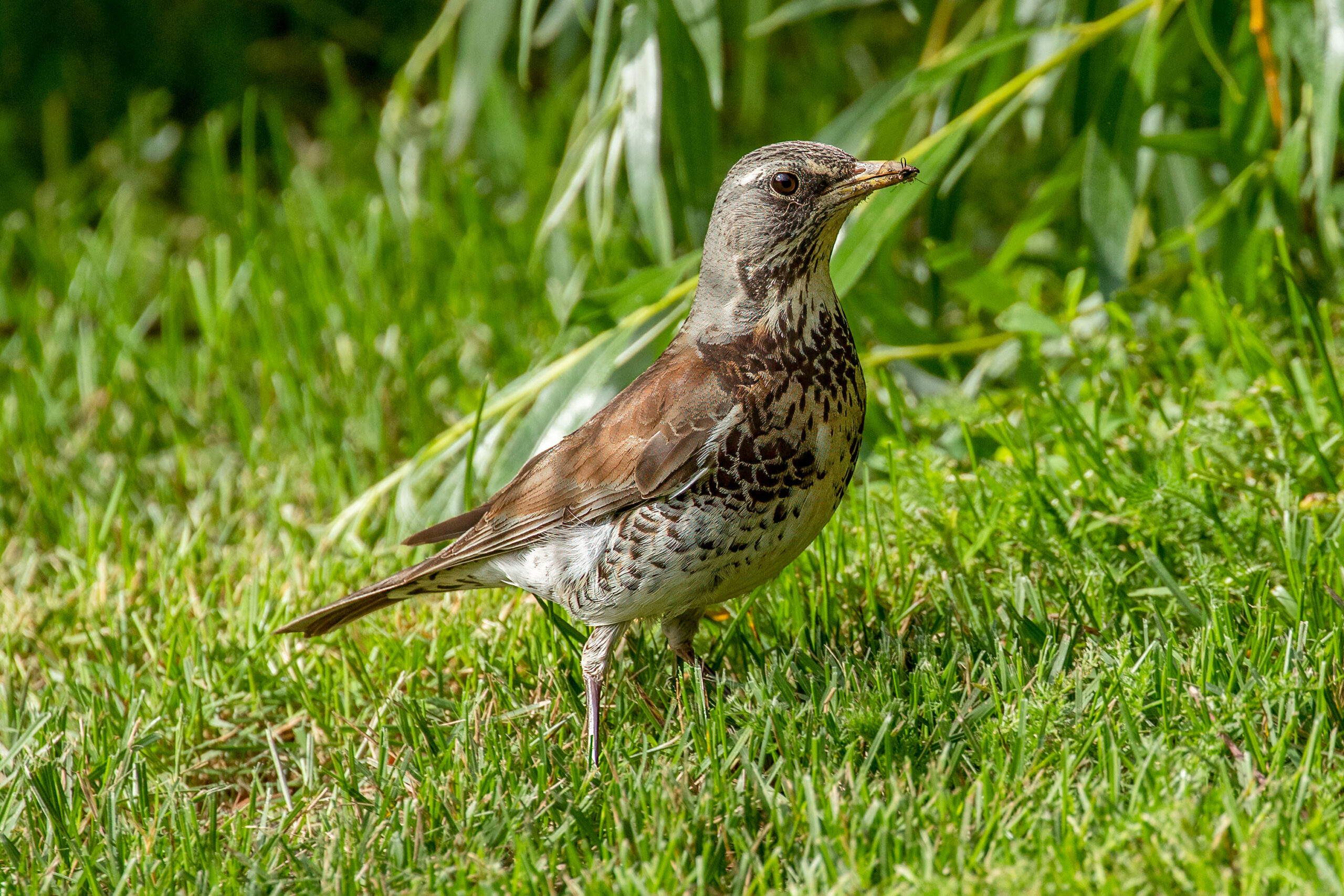Description
The Eurasian blackbird (Turdus merula), also known as common blackbird, is a species of thrush widespread across Europe, Asia, and North Africa. It is a medium-sized thrush, with a length of approximately 23-29 cm (9-11.5 in) and a wingspan of 34-38 cm (13.5-15 in). The species exhibits sexual dimorphism, making males and females easily distinguishable. It is characterized by its distinct all-black plumage in males, with a yellow-orange bill and eye-ring. Females and young birds are dark brown with a darker bill. The male Eurasian blackbird’s beautiful and melodious song is a distinctive and well-recognized sound, especially during the breeding season.
Diet & habitat
Eurasian blackbirds are omnivorous and have a varied diet that includes insects, earthworms, seeds, berries, and fruit. They forage on the ground, using their keen sense of hearing to detect prey. Invertebrate prey is the primary diet during the breeding season, with seeds, fruits, and berries taking over as primary food items during autumn and winter. The bird’s habitat is equally diverse as its diet, thriving in both natural and human-modified landscapes such as forests, gardens, and parks.Their adaptability to various habitats has facilitated their widespread distribution.
Migration
Migration patterns of the Eurasian blackbird vary by geographic location. Northern populations are migratory, traveling to southern Europe and north Africa during the winter months. In contrast, blackbirds in milder regions are resident or only make short-distance movements. This behavioral adaptation ensures their survival across a range of climates.
Nesting
Breeding season for the Eurasian blackbird begins in early spring, from mid-March to April, depending on region. The male performs a melodious song to attract a mate and establish territory. Nests are constructed by females, typically in dense vegetation or trees, where 3-5 eggs are laid. Incubation lasts about 14 days, with fledglings leaving the nest after another 14 days. The species is known for its ability to produce several broods in a season under favorable conditions.
Status
The Eurasian blackbird has an extensive range and an increasing population, and the species is listed as least concern on the IUCN Red List. While it faces threats from habitat loss and degradation in some areas, its adaptability to diverse habitats has mitigated any significant population declines.




